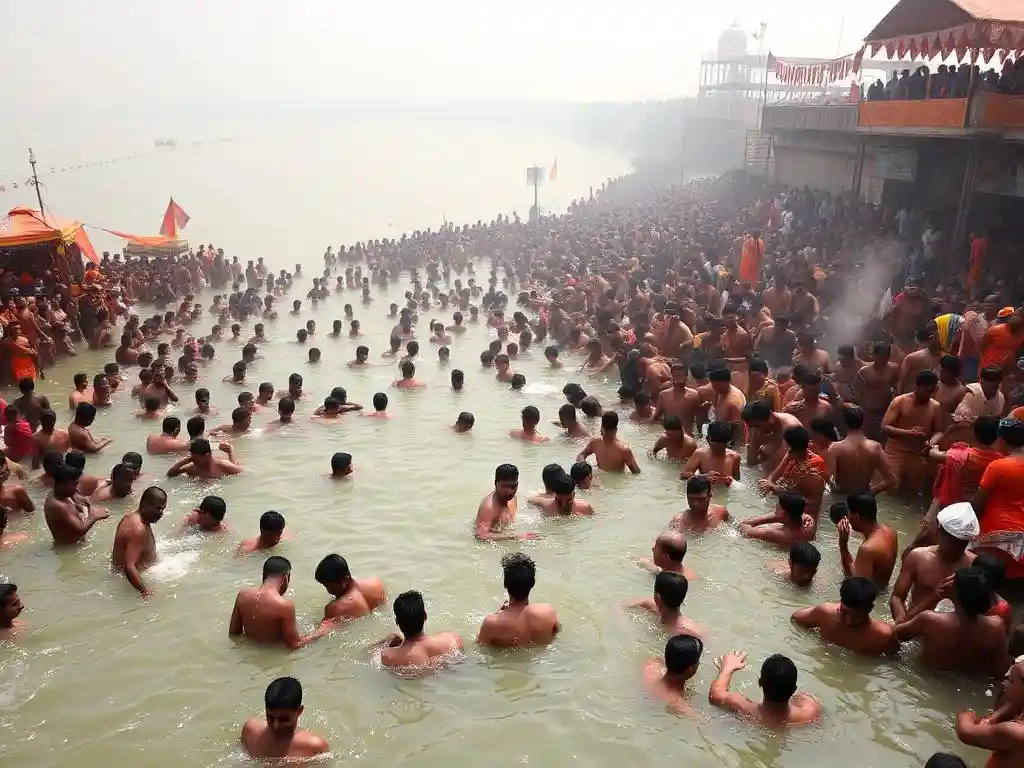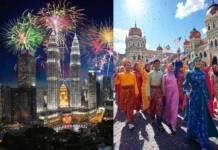
Before exploring the legend, let’s understand the significance of the Maha Kumbh Mela. Held every 12 years at four locations in India—Haridwar, Allahabad (Prayagraj), Ujjain, and Nashik—this grand festival sees millions of devotees gather to bathe in the sacred rivers, cleanse their sins, and seek spiritual enlightenment. The Mela, particularly the Maha Kumbh (the great Kumbh), is considered the most auspicious and spiritually significant.
The Kumbh Mela is not just a religious festival; it is a time of deep reflection, purification, and connection with the divine. Devotees believe that a dip in the holy rivers during this event can wash away their sins and bring them closer to moksha (liberation from the cycle of rebirth).
But what makes the Kumbh Mela even more mystical is the ancient story associated with its origin. The story of the “Maha Kumbh Ek Rahasya” holds the key to understanding the true significance of this gathering.
The Legend of the Kumbh Mela: The Churning of the Ocean
The story of the Kumbh Mela is intricately tied to the legendary event known as Samudra Manthan (the churning of the ocean), a tale found in the ancient Hindu scriptures, particularly the Bhagavata Purana and Vishnu Purana.
The Battle for Amrit (Nectar of Immortality)
According to the legend, the gods (Devas) and demons (Asuras) were locked in a bitter struggle for supremacy. To gain immortality and defeat the demons, the gods needed the nectar of immortality, known as Amrit.
This nectar was said to be hidden in the depths of the cosmic ocean, and in order to retrieve it, the gods sought help from the demons.
An agreement was reached: the Devas and Asuras would work together to churn the ocean using Mount Mandara as the churning rod and the serpent king Vasuki as the rope. As they churned the ocean, many divine and precious items emerged, including the Kumbh (a pot) filled with the Amrit.
The Theft of the Amrit
As the Amrit surfaced, a fierce battle broke out between the Devas and Asuras. During the struggle, the pot of nectar was seized by the gods, and the demons were left without their prize.
It is said that four drops of the Amrit fell on four sacred locations in India: Haridwar, Allahabad (Prayagraj), Ujjain, and Nashik.
These places became the sites for the Kumbh Mela, and it is believed that bathing in these waters during the festival allows devotees to absorb the divine nectar’s blessings, purify their souls, and attain spiritual liberation.
The Mystical Connection
The “Maha Kumbh Ek Rahasya” (The Great Kumbh Secret) refers to the profound cosmic energy that flows through these sacred locations. The drops of Amrit, believed to have fallen at these sites, hold the key to divine rejuvenation and spiritual awakening.
The Kumbh Mela is not merely a physical gathering but an opportunity for devotees to align themselves with these celestial energies and cleanse their spiritual impurities.
The Spiritual Significance of the Kumbh Mela
The Maha Kumbh Mela is a sacred occasion that goes beyond the physical act of bathing in the river. The festival’s true power lies in its ability to connect devotees with the divine, allowing them to experience profound moments of spiritual transformation. Here’s why the event is so important:
1. Cleansing of Sins
Devotees believe that a single dip in the holy rivers during the Kumbh Mela can wash away a lifetime of sins. The rivers—Ganga, Yamuna, Saraswati, and Godavari—are considered sacred, and bathing in their waters is said to purify the soul.
2. Spiritual Renewal
The Kumbh Mela offers an opportunity for spiritual renewal. It is a time for introspection, prayer, meditation, and connecting with the divine. The chanting of sacred mantras and the collective energy of millions of devotees amplify the spiritual experience.
3. Symbol of Unity and Brotherhood
The Kumbh Mela brings people from all walks of life together. Regardless of caste, creed, or social status, people come together with a common goal: to seek peace and liberation. This sense of unity and brotherhood is one of the festival’s most powerful aspects.
4. Celestial Timing
The Kumbh Mela is held at specific intervals based on the alignment of planets and stars. This celestial timing is believed to enhance the energy of the event, making it the most auspicious time for spiritual activities.
The Mahakumbh: The Ultimate Gathering
Every 12 years, the Kumbh Mela held at Prayagraj (Allahabad) becomes a Mahakumbh or Great Kumbh, where the most significant gathering of devotees occurs. During this period, the alignment of the planets is considered particularly favorable, and the energy of the sacred river is believed to be at its peak.
The Mahakumbh is often considered the pinnacle of the Kumbh Mela cycle, and thousands of saints, ascetics, and pilgrims converge to witness the grand event, bathe in the holy waters, and participate in the spiritual activities that unfold.
The story of Maha Kumbh Ek Rahasya is more than just a tale of celestial battles and divine nectar. It is a reminder of the deeper mysteries of the universe, the cosmic forces at play, and the spiritual potential that lies within each individual.




























